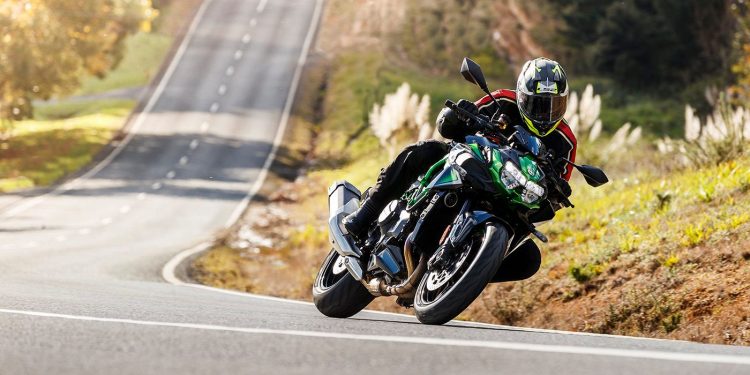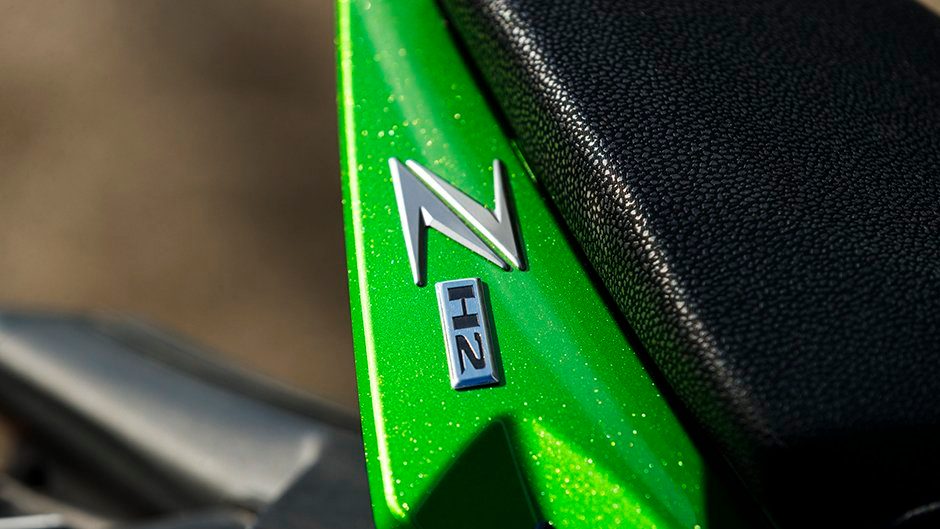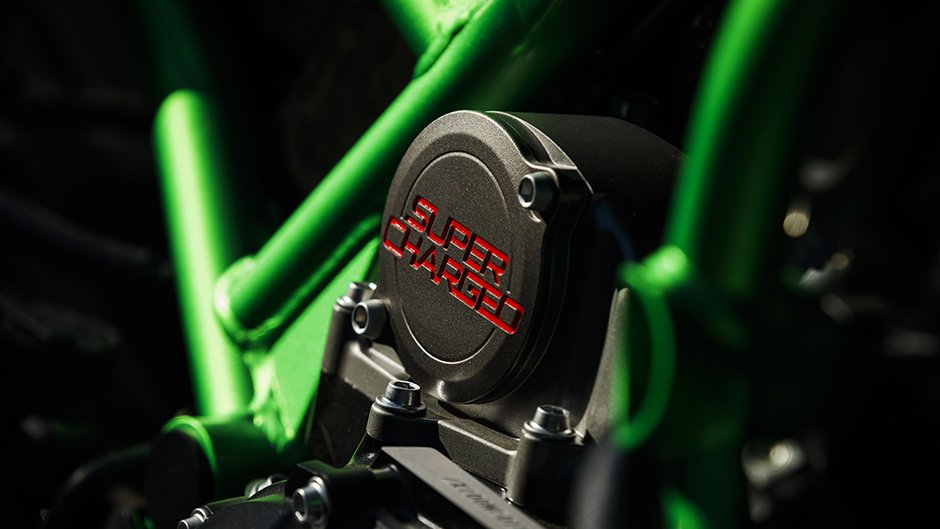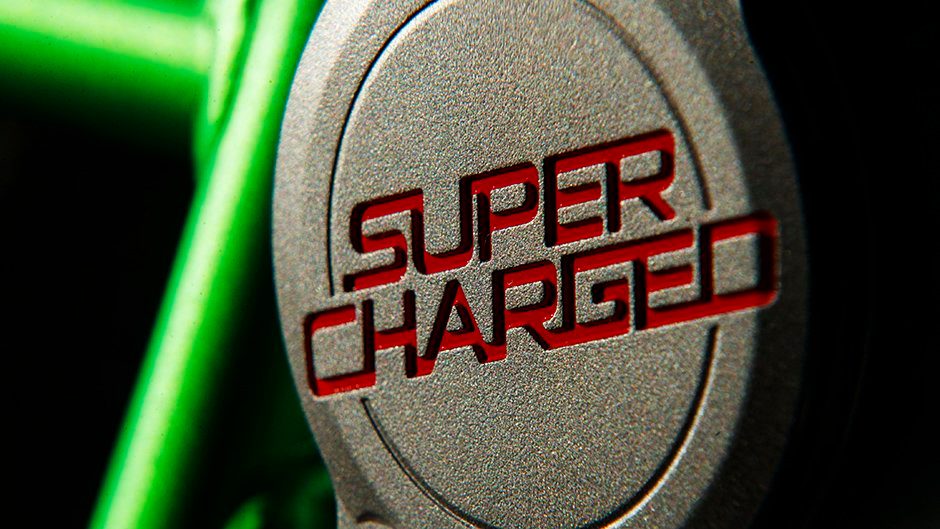2021 Kawasaki Z H2 – H-Bomb review
Words Peter Louisson | Photos Tom Gasnier
We’d been raring to ride Kawasaki’s H2, the modern successor to its banzai two-stroke namesake of the 70s. Is it a scary supercharged monster or what?
“Ever ridden a supercharged bike?” I was eyeing up the green and black Z H2 that had just been wheeled out, and was quietly having a Naomi Osaka-esque anxiety meltdown about helming a 200-horse supernaked…fitted with a supercharger for insane measure. I reply “No, but I’ve driven plenty of other supercharged machines before”. And it’s true – JLR has a long history of supercharging its top-end stuff.
The technical guru reckons “there’s nothing like it for acceleration”. And moments later, exiting Te Rapa Rd, heading onto the Expressway north on a cold, wet second day of winter I discover he’s right…almost. About the only thing that comes close for handlebar tug is the ZX-14, another Kawasaki, coincidentally. It’s a bike that accumulates speed like few others. The H2 is similar, only it does it with an ease that’s disarming.
Next day, drier, we roll on the throttle in sixth exiting the 80kay zone on the motorway, and there’s a perfectly progressive, and substantial surge of acceleration. Glancing down we note the speed rush through the 120 mark. Tick tock, just like that. It’s even quicker 80-120 in first, the front wheel pawing the air, electronics maintaining a safe angle of attack.
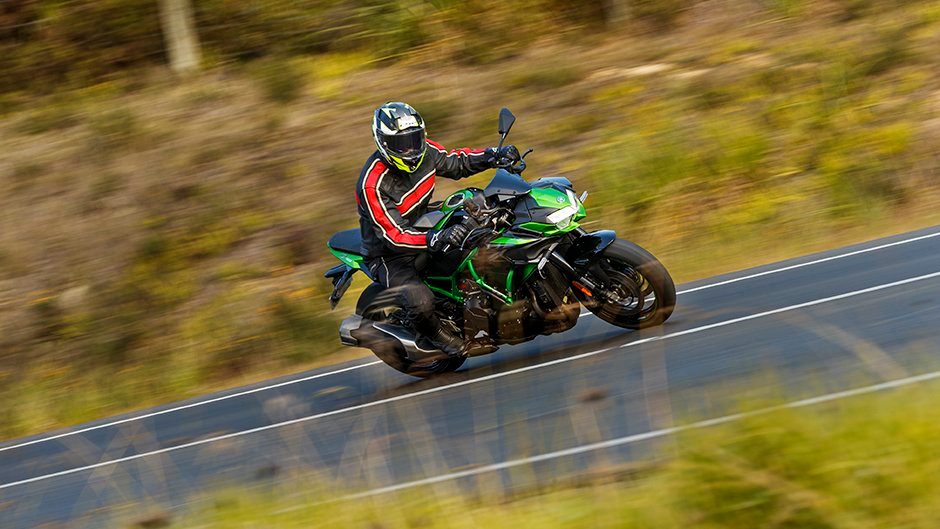
This we know because the day prior in damp conditions we’d already seen an overtake ticked off in under 1.5sec. In the dry, we thought it might match the ZX-14 SE’s best of 1.18sec, but no, not up against a wall of electronic protection that keeps the H2 from flipping out. We saw 1.33sec with TC (and antiwheelie) on. Turned off, and it’s a fire-walk-with-me scenario in winter. I hardened up and tried that but couldn’t beat 1.4sec.
Earlier, we’d been messing around with 0-100s in dry but cool conditions, without launch control, and quickly went from an initial 3.5 to 3.09 seconds. We never bettered that. Again, you might with electronics off but it takes flight so easily. Later, we activated launch control but there’s a bit much electronic intervention and 3.33sec was as good as it got.
No cat jokes
So what exactly is the H2? Well it’s the ‘pussy version’ of the H2 line-up, (editor’s words, not mine). If you’re hung up on firepower that’s true as it ‘only’ gets 200hp. The Z H2, as it’s known, costs $30,995, and there are five other H2s, ending with the utterly bonkers Ninja H2 R with an almost unbelievable 322hp and 165Nm. This is a track-only monster, with an unofficial top speed in excess of 400km/h (248mph). Stronger and faster than those lamo MotoGP bikes with only 250hp, and a top speed of 357km/h. You’d need cajones (and deep pockets) to tackle the Ninja type R and evidently a few speed demon Kiwis have what it takes!
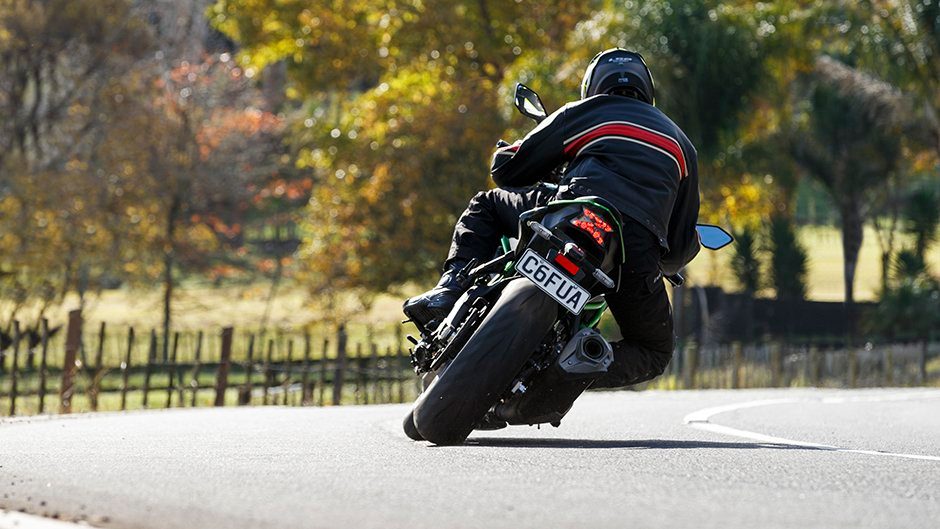
For torque, the R gets the most but the Z H2 develops 137Nm at 8500rpm. The others have a similar amount but it’s developed at higher revs. So if it’s midrange explosiveness you’re after the least expensive H2 may be the best bet. It’s smooth too, even in Sport mode, building progressively from about 3000rpm onwards and going gangbusters from 4500rpm. But it also hauls happily from 2000rpm or 40km/h in top gear!
The one thing the H2 doesn’t get is much weather protection. A tiny bug screen keeps rain off the beautifully clear TFT screen. You don’t need to look at it much, other than to get a check on pace. At 100 in sixth, it’s easing along at 4000rpm and is liquid smooth. Cruise control helps to keep things real but actually it’s happy at just about any speed; this is just so laid back, easy going.
Comfortable too eventually
Expecting a sports riding position we were surprised to find it’s relatively upright, the tank and chassis rails the perfect width for gripping the missile with your knees. You can push against the stepped pillion seat to counter the headlong rush of acceleration.
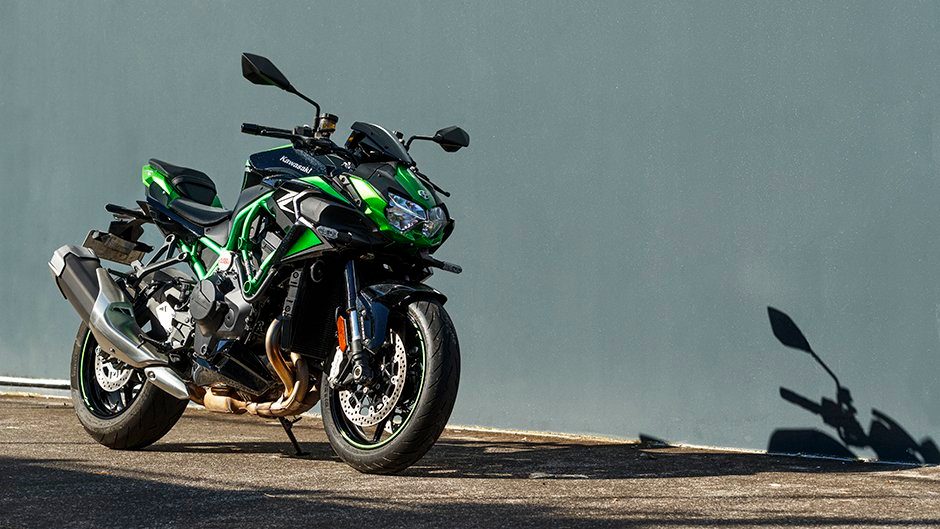
The front end with fully adjustable USD Showa suspension felt firm initially, while the rear was too rigid, the thin seat not helping. However, the monoshock is adjustable for rebound and felt much better after taking to it, softening tension by a few turns. We backed off compression and rebound up front too, and the ride thereafter was a beaut mix of control and comfort.
You’d never think this is 240kg once underway, although moving it around at rest you’re aware it’s no ZX-10. The wider, higher bars make it easy to turn, aided by fork rake of 25 degrees. It handles changes of direction like a pro, with great stability at speed, and the Pirelli Diablo Rossos are a perfect complement.
Two other aspects are particularly noteworthy; shift action and brake function. The H2 transmission uses a dog-ring selector hastening shift speed while also making changes lighter and more positive. It works as suggested. The up/down quickshifter is silky too, except it won’t activate under 2500rpm. No biggie. Brakes are strong, especially the rear unit, delivering bulk stopping power. They’re not needed as much as you’d think since there’s useful engine braking.
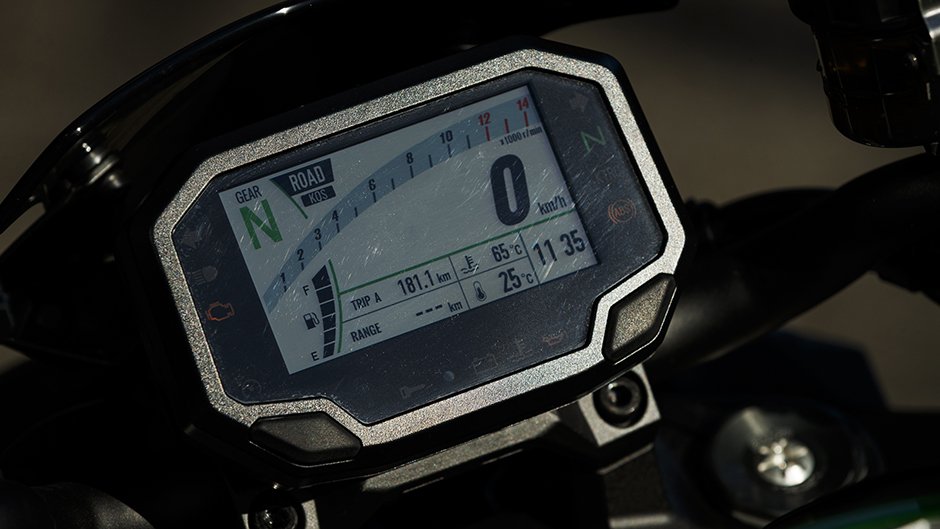
Crouching tiger
The overall look I prefer to the Ninja H2 R which is all aero and aggression. This means business without looking too futuristic, its abbreviated angular cowl, TFT screen, squinty LED lights and minimalist trellis frame hinting at the tech beneath, of which there’s plenty. The four-into-one-into-two pipes are nicely shaped for maximum lean angles, which the display kindly monitors for you. Only best not to watch that; check your action afterwards. We managed 41 degrees, although it hit a maximum of 80 degrees once but that was unintended, a slip up while turning it around, engine off.
You can hook up your cellphone via Bluetooth, the Rideology App showing data (unspecified, so we didn’t bother). And there’s good safety stuff like IMU, corner brake control, antiwheelie and antistoppie, plus a host of four-letter acronyms.
Anything we’d change? More seat padding wouldn’t hurt, the steering lock is okay but a touch tight for easy turnarounds, and fuel use can rise some if you’re constantly working the turbine.
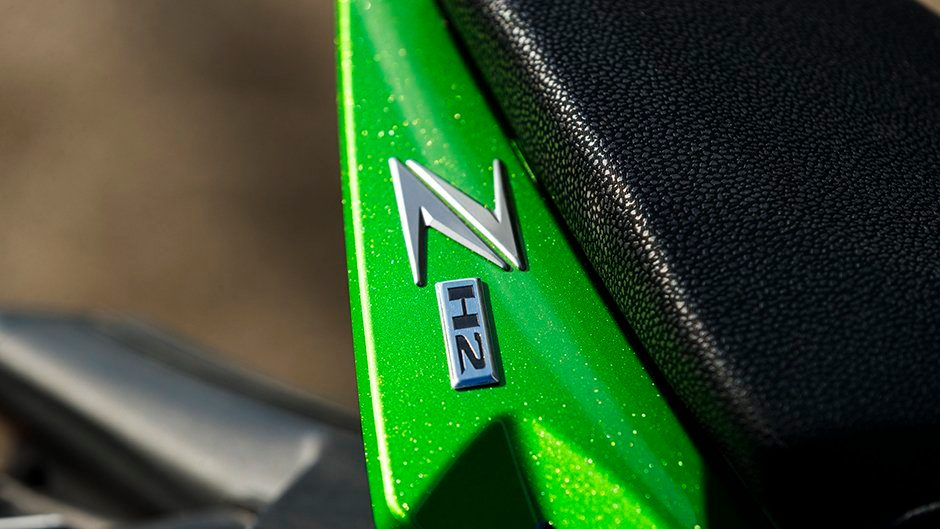
The Z H2 essentially achieves what the ZX-14 does for straightline speed but does so without the bulk or weight, which means it handles and stops more like a superbike. It’s amongst the best of the supernakeds I’ve ridden, the supercharging merely adding to its allure.


